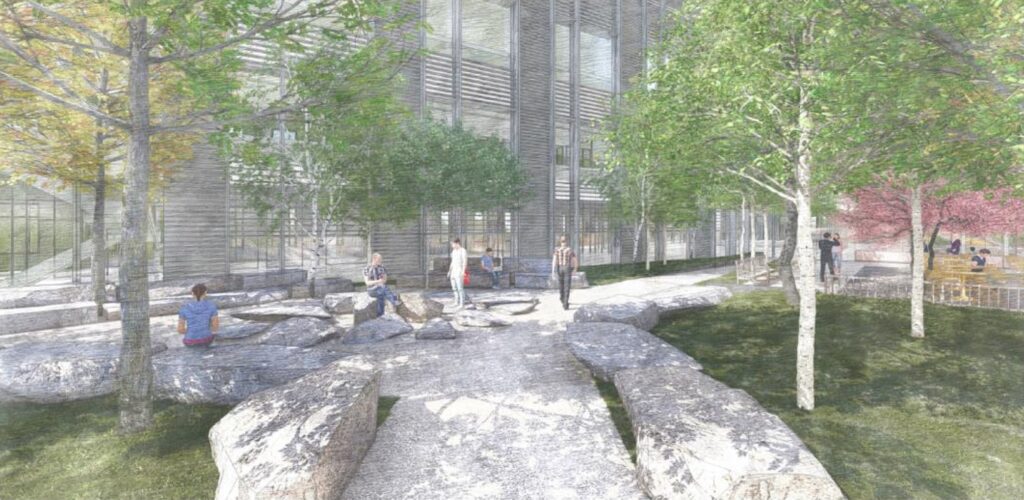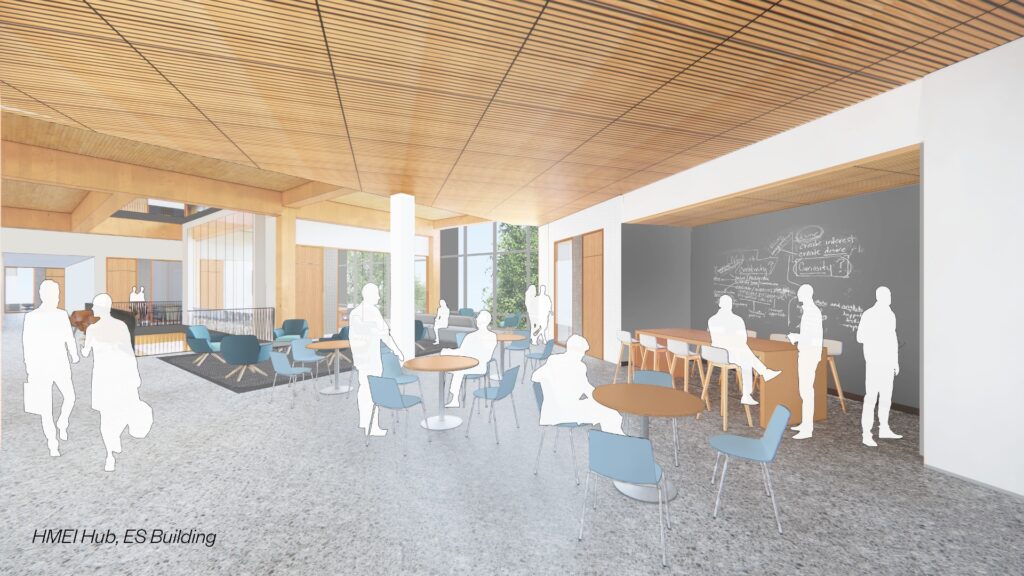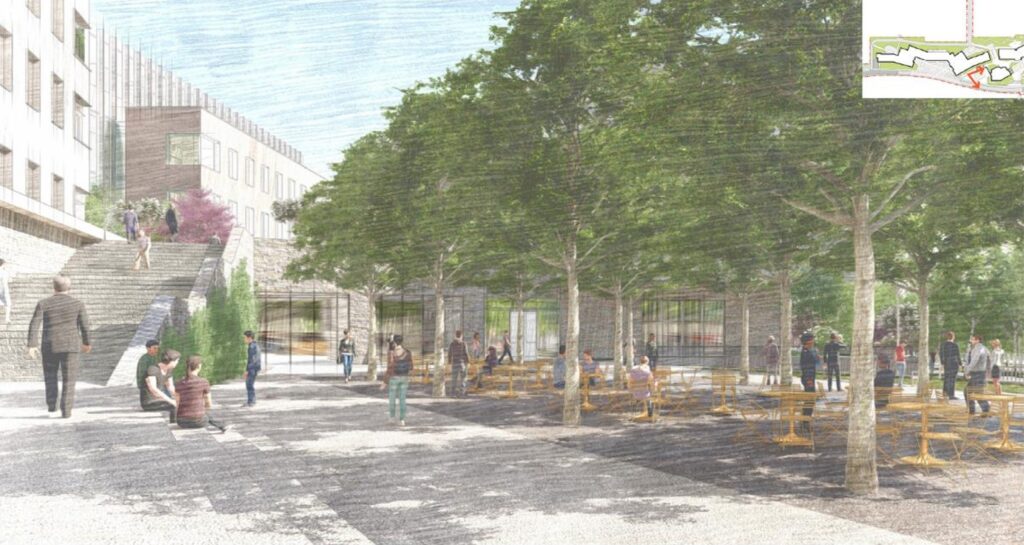The High Meadows Environmental Institute (HMEI) is the centerpiece of the new ES + SEAS (Environmental Studies and School of Engineering and Applied Science) neighborhood now under construction at Princeton University and projected to be completed in early 2025.
Located between Ivy Lane and Prospect Avenue, our new home will feature state-of-the-art, teaching and research facilities near the heart of campus that will allow HMEI to strengthen and expand its mission of interdisciplinary science and scholarship focused on global environmental issues such as climate change, biodiversity, water security, energy, and environmental policy and justice.

“These new teaching and research facilities will allow HMEI to continue tackling some of humanity’s most pressing challenges, such as climate change, water security and the loss of biodiversity, and to develop solutions to these interconnected problems in a more collaborative and interdisciplinary framework,” said HMEI director Gabriel Vecchi, professor of geosciences and the High Meadows Environmental Institute.
The ES + SEAS neighborhood will include four buildings housing Princeton’s principle centers for environmental studies — HMEI, the Department of Ecology and Evolutionary Biology (EEB), and the Department of Geosciences — as well as well as facilities for bioengineering, chemical and biological engineering, and a Commons building featuring shared dining, library and conference facilities.


“The location of the building, really, is at the intersection of the sciences, engineering, public policy and the humanities,” said EEB chair Lars Hedin, the George M. Moffett Professor of Biology and professor of ecology and evolutionary biology and the High Meadows Environmental Institute. “It’s designed to be a magnet for bringing these groups together. And this will kind of be the cauldron for forging new fields, new ideas and new interactions.”


The linchpin of the ES space is an atrium that will include a new 200-plus person auditorium, lecture halls and public exhibition spaces, a plant soil lab, and teaching labs, while three additional floors within HMEI will consist of both office and collaborative research space.
The complex will be integrated into the hillside between Prospect Avenue and Ivy Lane via sunken courtyards and extensive pedestrian pathways to ensure a strong connection to outdoor spaces for the public and University community.


The buildings are designed to meet or exceed Princeton’s sustainability standards through features such as geo-exchange heating and cooling, a green roof, high-performance exteriors, rainwater harvesting and sustainable materials. The University plans to seek LEED certification of the facility.






